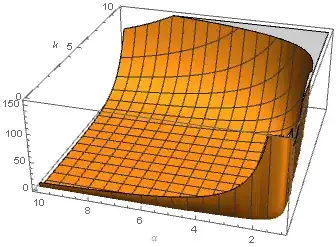As well-known the modified Bessel functions of orders zero and one of the first kind, $I_0(x)$ and $I_1(x)$ are positive and increasing functions over $x\in(0, \infty)$, while the modified Bessel functions of orders zero and one of the second kind, $K_0(x)$ and $K_1(x)$ are positive and decreasing functions over $x\in(0, \infty)$.
How can I prove the following inequality with $\alpha>1$ and $k>0$?
$$I_0(k\alpha)K_1[k(\alpha-1)]-K_0(k\alpha)I_1[k(\alpha-1)]>0.$$
In other words, how to prove $I_0(x)K_1(y)>K_0(x)I_1(y)$ with $x>y>0$?
I believe the inequality is true as can be observed by plotting. Thank you very much!
